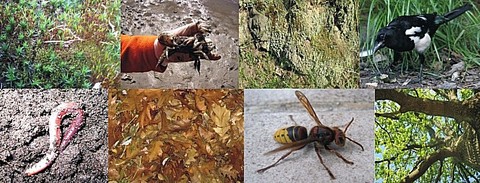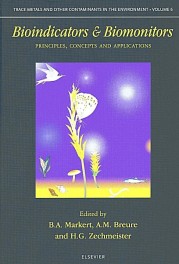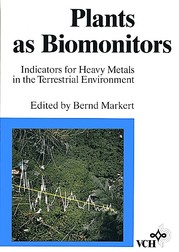Pollution Control by Use of Bioindicators/Biomonitors
Please also have a look to the philosophy of bioindication & biomonitoring in
different international languages.
Bioindicators & Biomonitors as Innovative Biotechniques for Controlling Trace Metal Influences to the Environment
According to the high contamination of different compartments in ecosystems, mainly the air, water, soil and sediments, by inorganic and organic pollutants, intensified research into environmental chemistry of these affected ecosystems has to be undertaken. Analytical data from biological samples do not provide information on “the state of the environment” straightforwardly. For this, a more interdisciplinary approach and use of biotechniques as bioindicators, biomonitors, biomarkers and bioassays in general have to be used to achieve a more effective integration of geochemistry and ecotoxicology. A strong comparison of measurements performed by instrumental spectrometers and use of bioindicators / biomonitors must be made.
In practise, instrumental measurements are often an integral part of bioindication. For a number of years “classical” programs for environmental monitoring are being supplemented by bioindication measures already. The focus and future goals of biogeochemical research must consider with care the direct effects on human health including modelling of the thereby active biogeochemical processes more than hitherto. Intensified training of students in environmental biogeochemistry and related subjects on a theoretical and practical / experimental manner is essential. A strong collaboration and hand in hand work between industrial, educational and public institutions has to preserve and recreate formerly anthropogenically destroyed ecosystems worldwide.
To give an insight into this highly interesting research area a short introduction in definitions on related terms is given (active/passive – effect/impact bioindicator/biomonitor; biomarker; biosensor; tolerance; resistance; sensitivity).
[please click on the figure]
For further information please have a look to a standard work of Markert B, Breure A, Zechmeister H, eds. (2003) Bioindicators & Biomonitors. Principles, Concepts and Applications. Elsevier, Amsterdam.
Content (997 pages):
I General aspects and integrative
approaches
II Bioindicators in use
IIa Standard Tests
IIb Microbial indicators
IIc Lower plants
IId Higher Plants
IIe Invertebrates
IIf Vertebrates
III International programmes for
biomonitoring purposes
An older summary of Bioindication and Biomonitoring is given in Markert B (ed.) (1993) Plants as Biomonitors. Indicators of Heavy Metals in the Terrestrial Environment. VCH, Weinheim.
Please go ahead with the Introduction of Bioindicators / Biomonitors.











